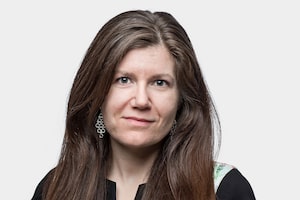Alberta’s 2.7 million eligible electors are showing early enthusiasm to cast ballots in the provincial election, with 161,000 people voting Tuesday, the first day of advance polling, and another 156,000 on Wednesday. At this pace, Alberta is on track to set a new record for voter turnout. The previous record was set in 2019, with 67.5 per cent of voters showing up to the polls, the highest in the province since the 1971 general election. The United Conservative Party won the 2019 election in a landslide, but the 2023 edition is shaping up to be a photo finish. And voter turnout will dramatically shape the outcome of the May 29 election.
Get out the vote
Alberta’s 2023 election will not hinge on policy. And at this stage, it is unlikely the United Conservative Party or the New Democratic Party will be able to sway undecided or swing voters to support them, according to Shachi Kurl, the president of the Angus Reid Institute.
“This election is not about winning available hearts and minds,” she said. “What will decide this is the extent to which the NDP is able to basically have its dream voting period in terms of voter turnout.”
The NDP has to be efficient. Running up the score in Edmonton-Strathcona, NDP Leader Rachel Notley’s riding, won’t help. It needs to pull its vote in Calgary’s battleground ridings, as well as in the suburban communities around Edmonton.
Parties on the left, historically, leaned on unions or similar labour networks to assist in delivering the vote, Ms. Kurl noted. But modern dynamics have changed for the NDP, which has lost some of that older, working-class support, she added. NDP backers are now more urban, progressive, and younger – people who are not connected to labour networks in the same way, making it hard to identify these voters. The easiest way to pull a vote, Ms. Kurl said, is to knock on the door of a single-family home. But it is harder to access apartment towers and condo buildings where urban progressives might live.
“This is now a ground game campaign,” Ms. Kurl said. “The challenge is for the NDP to deliver.”
Age
Younger voters tend to lean to the centre-left, regardless of province or whether the election is federal or provincial. In Calgary, where Alberta’s election will be decided, this should favour the NDP. However, younger voters do not have the same propensity to vote as their older counterparts.
Christine Myatt, a consultant at New West Public Affairs who previously worked as a top UCP aide to former premier Jason Kenney, said the younger crowd could tip the scales in ridings that are equally balanced.
“The younger demographics could be a game-changer,” Ms. Myatt said. “If they show up and vote, I think the NDP wins.”
But for the NDP, relying on members of this bloc to vote could prove risky. “They are notoriously reluctant,” she said.
Culture
The NDP has a path to victory, but it is far narrower than the route available to the UCP. The way Albertans view themselves and the province’s culture works against the NDP, even as UCP Leader Danielle Smith makes traditional conservatives nervous.
For the NDP to win, it needs to wrest support from 5 to 6 per cent of the population who have, for their entire lives, voted for parties on the right and view Alberta as a conservative stronghold, according to David Coletto, the founder of Abacus Data.
“There’s an identity and a bunch of norms that are unique to Alberta that, in this election, are in conflict,” he said. Plenty of voters are uncomfortable with Ms. Smith and consider her outside the mainstream, he said. But, on the flip side, they have always voted conservative.
“It doesn’t appear that the potential fear of Danielle Smith is outweighing their instinctual, natural conservative tendencies,” Mr. Coletto said. “And the New Democrats haven’t done enough – or maybe it is just not possible this quickly – to break that down.”
Urban vs. Rural
After the ballots are tallied, Alberta’s political map will be saturated in conservative blue, with sizable orange dots in Calgary and Edmonton, regardless of who forms government.
“People in rural Alberta view the world, their government, policy and politics, wildly differently than their counterparts in Edmonton for sure, and increasingly in Calgary,” Ms. Myatt said. The election will reinforce this, she said.
“But I think that whatever party wins needs to be really cognizant of that divide and really not only bring forward policies that cater to both urban and rural, but also try to bridge that divide,” she said.
Coloured maps can also be deceptive. Grande Prairie, Red Deer and Fort McMurray will likely be painted blue. But there are progressive voters itching to be heard in those communities. The two races in Lethbridge are also tight.
And in Calgary, scores of ridings could be settled by just a few hundred votes, another indication coloured maps oversimplify Alberta’s political landscape.
“Are we even going to know the results on election night?” Ms. Myatt said. “We could be sitting there at midnight not knowing who won the election.”
 Carrie Tait
Carrie Tait